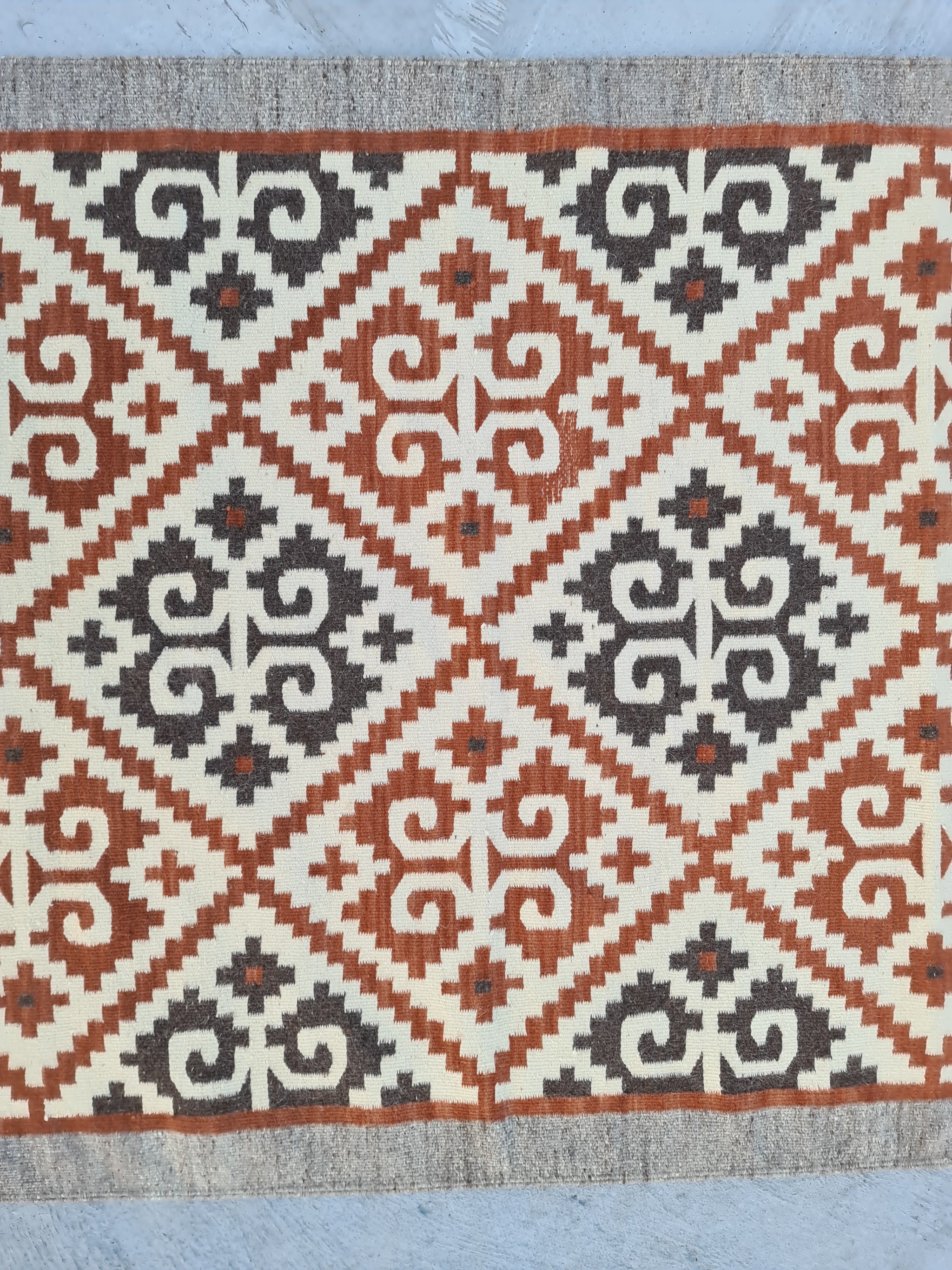Nahual de la tierra
$ 33,300.00
Size: 130x200cm; 4.2x6.5ft
This pattern is a #fractal symbol that teaches us about the perception state that nahuales (#shamans) achieve when they unite their nahual perception in the spirit world with the day to day perception in the tonal world of language, logic and mathematics. The nahual pattern is obtained by uniting the hands in a fist shape with the thumbs joined in the middle, just like a #mudra. Can you see it? This pattern also looks like the spiral of the Fibonacci series, the golden ratio that is found everywhere in nature, from our fists to the growth of plants and the formation of clouds and galaxies. This inner spiral represents the inner journey of self discovery that we have to embark to find our true face and true heart. We call this symbol in our language "Gareak Guiea", literally the flowered greek key symbol. Archeologist named this patterns Grecas in Spanish language because they noted the similarity with greek patterns and symbols. This naming of the pattern denotes the Eurocentric approach to the understanding of our native ancient cultures.
When I talk about the Nahual pattern I like to illustrate the pattern with the life path of Maria Sabina, a world renowned healer from Huatla de Jimenez that used the sacred mushroom to heal people in her village. It took her a life time to reach the status of a healer; when she was a young child her parents died so because she was very poor she and her sister would forage edible wild plants in the forest to feed themselves. Her life pattern lead her to walk the path of the warrior to bring the best of her spirit and flower in the world. When she was an accomplished healer she could transition easily from the Nahual perception (spirit world) to the day to day world; in the spirit world she would communicate with her patients to find out the source of their illness and then come back to the tonal world (day to day language world) to administer the healing with the precise amounts of plants and rituals needed for healing. Most ancient governors in our culture were Nahuales, healers, seers and great man and woman full if knowledge. It was during the colonial times that the word nahual got transgressed into a negative connotations describing evil people that cause damage and illness by transforming into scary animals.
The diamond pattern represents the medicine of the snake. Snakes are the elders of the planet and hold the ancient knowledge, medicine and power. In our language, the word for sister is Bealaā, my snake.
Share:
Related Items
D'Beælá viínî: three sister seeds
$ 15,600.00
Size: 130x200cm; 4.2x6.5ft Weaver: Asunción Hernández LazoPrice: $500USD Order by DM to Pay by Venmo, Zelle or Cashapp and get free shipping. Materials ans methods: criollo sheep wool in its...
Kayù'u gibish lou Xiguie'a: sunset in Teotitlan
$ 13,500.00
Kayù'u gibish lou Xiguie'aAtardecer en Teotitlan del ValleSunset in the land of the Gods Size: 4.2x6.5ft Weaver: Mario Sosa Price: $677 USD Materials ans methods: criollo sheep wool hand dyed with...


















